Share This As Much As You Can Everyone!

Share this as much as you can everyone!
Got this from: Friend from discord
More Posts from Ancientbruisesbrokenruses and Others
My road to hell isn't paved with good intentions-or bad-it’s just my road.
Rainbow Rowell.
You know, just because you’re straight doesn’t mean you can treat people who aren’t as sinners and hell-bound unnatural beings.


10 Things I Hate About You (1999) dir. Gil Junger
Nooo! Many of the links I need are gone.
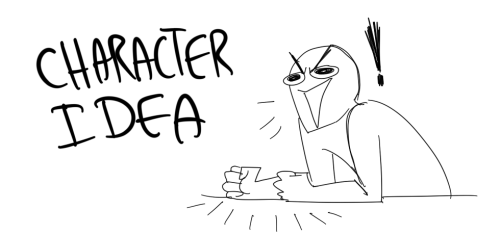
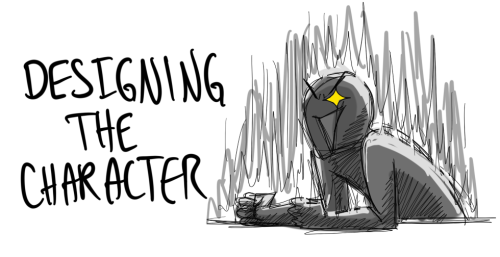
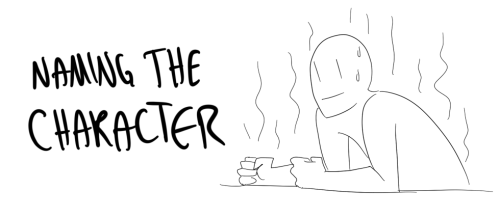
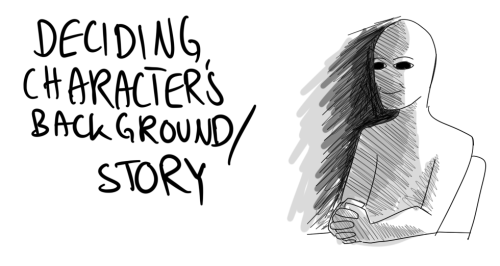
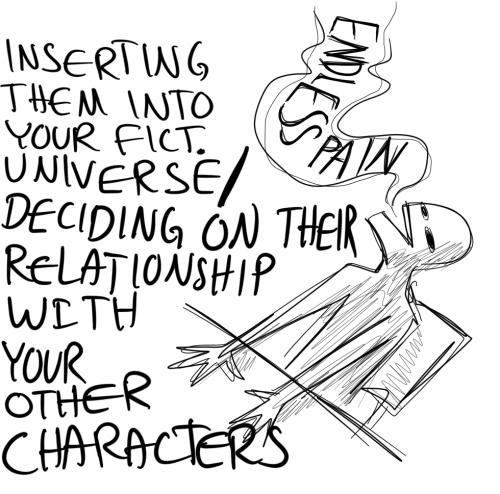
the suffering never ends
Wish I had this years ago. Could’ve saved me my mental health.





the suffering never ends
What I do is give any supe with a super power that test the capacity of the human body something to help with that. It’s to help with the strain and such. Night vision? Glasses. Heat vision? Glasses. Super vision? Glasses. Super hearing? Hearing aid. Super sonic flight? Hearing aid. Super speed? Hearing aid and muscle/knee brace. And(thinking back to The Flash here) a special diet. Super strength? Muscle brace. Just because they have super powers, doesn’t make them completely immune to anything related to the human body. They are still, after all, human. Well…they bodies are at least. Their powers just make them a bit for resilient to it.
It’s actually really fun. Normal powers all have a drawback because they’re super, not meant for the human body to handle. I really enjoy brainraining those. Maybe invisibility hurts the skin so they need some sort of super skin care regimen. That could lead to some superhero merch(like the underooes, lunch boxes, etc. That we have). It’s just fun.
Then there’s the supes with more…subtle powers. Not as extravagant or well known like super strength or flight. Empaths[1] are seen as mentally unwell. Due to their powers, they have sharp bits of rage. Mood swings. And stuff of the like. They have to take anti-depressants as well as mood-stabilisers and other pills/drugs to help with the down-sides of their powers.
1: (chiefly in science fiction) a person with the paranormal ability to apprehend the mental or emotional state of another individual.
Happy Storyteller Saturday! Do any of your characters wear glasses? I recently got a pair, and the world is much sharper than it used to be!
I’ve been thinking that perhaps they should, as well as rethinking my “supes never get sick” rule. As it stands, there are enchanted glasses that help with eyestrain, translations, and seeing through glamours, but no one I’ve written so far needs them correctively
How to write about Grief:
There is no right or wrong way to experience grief. Just as there is no right or wrong way to write it. Everyone is different, each set of circumstances are different.
The point of this post is to show you how different people react in different ways, and give points on how you might write that, depending on your character and story.
Reactions to Grief
Numbness: Your character may go into auto-pilot and be unable to process the events that have unfolded.
Anger: This can be aimed at other people, at a Higher Being, or at nothing in particular.
Unsteady: Your characters may be unsteady. For example, unable to stop their voice from shaking or they may find it difficult to stand.
Focusing on Others: Your character may disregard their own feelings because they are so overwhelmed and instead concentrate on someone else’s well-being.
Seek out routines: Amid upheavals, your character may seek comfort in tasks that are familiar and “safe,” such as working, cleaning, making their bed, making absurd amounts of tea or taking a morning walk.
Pretending that Everything Is Okay: Grief is viewed as an emotion that should cease or be concealed once the funeral is over. So people mention the news in an offhand comment, then talk and laugh as if all is right with the world.
Denial: Some people deny the reality of death and convince themselves that the news is a joke or can’t be true.
Reactions from people surrounding your character:
People may avoid your character as they do not know what to say or simply can’t find the right words.
Some may even go as far as to cross the street when they notice your character approaching.
Even people that the character has known for years may act strange or standoff-ish, simply because they don’t know what to say.
On the other side of that, some people may be overly helpful and friendly.
It is not uncommon for estranged friends, family or others to suddenly reappear in a person’s life after they have experienced grief.
Either because those people want to offer their support and love or because they’re being nosy and they want to be kept up to date on the “drama”.
Most people will move on from the event fairly quickly if they weren’t emotionally invested.
Some people may even get annoyed at your character for still being upset weeks or months later.
When talking about the person they have lost:
Your character may recall a memory or tell a story about their loved one, these are possible reactions. (I have encountered all of them.)
Your character may being to cry or get upset at the thought of the person they have lost.
The person they are talking to may become awkward and avert eye contact when your character brings up the person they have lost.
Others may ask or tell your character to stop talking about the person they have lost. They may roll their eyes, cough awkwardly, or cut off your character mid sentences so that they can change the subject.
Some people may ask inappropriate questions about the circumstances in which the character’s loved one passed away. Depending on the personality of your character then may react differently.
Other things to note:
Grief is not constrained by time.
One of the main problems with grief in fiction is that a character is typically heartbroken for a couple scenes and then happy again. But grief does not evaporate because the world needs saving.
Allow your character to wrestle with their grief.
Your character may feel guilty. Your character may feel a twinge of guilt when they laugh or have a good time with someone else; when they do something to remind them that they’re alive, and their loved one isn’t.
Grief is a game changer. A previously outgoing character may withdraw and isolate themselves. Some people may take grief and/or bereavement as a sign that life is too short; they may make big decisions in an attempt to make themselves feel better and grow away from their pain.
Sometimes grief can help you find your purpose.
At first grief can be all consuming. It hurts and you can’t really control it. It may seem unrelenting. Eventually the grief will become easier to deal with, your character may find the days to be better, but that doesn’t mean that when the grief hits it doesn’t hurt any less.
For most people, grief never really goes away. “Sometimes you have to accept the fact that certain things will never go back to how they used to be.”
It is rare that a person will ever give a long speech about their feelings, a lot of people struggle to even find the words. But that’s okay. Show the reader how your character feels, rather than just telling them.
Don’t pause the plot to deal with the aspect of grief. This could overwhelm the readers and drag the pace down. In reality, life doesn’t just stop due to grief, the world keeps spinning and things still need to be done. Use the character’s grief as a backdrop for the story’s events.
Yes, grief affects the character’s day-to-day life, goals, and relationships. But it shouldn’t drive readers away or stagnate the story. Instead, should engage readers and produce empathy that keeps them turning pages.
You don’t need to tell your readers that everything will be fine. You don’t need to provide all of the answers.
“Skirting grief and treating it lightly is easy. But by realistically portraying it through a variety of responses and its lasting effects on the character’s life, readers will form a connection with your characters.“
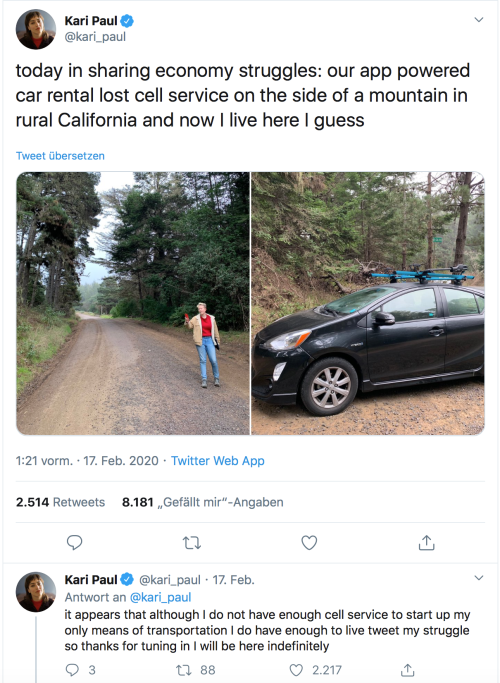
Welcome to the future, where you don’t own anything and the stuff you rent stops working once your phone has no signal.
The Ultimate Positivity Post
Things that make me happy
- drinking green tea - friday nights - reading books on rainy days - no homework - discovering a new tv show - waking up early but refreshed - running down the street when no one’s looking - washing my hair - smiling at strangers on the bus - spending time alone - wandering around my hometown - watching the stars - the smell of old dusty books - being wrapped up in a blanket on a cold night - talking with someone who understands - lying on the grass & cloud watching - picking up flowers - hiking - endless hot showers - first snow - understanding something in maths - being able to look at myself in the mirror - writing in a journal - the smell after rain - listening to music - watching sunrise - breakfasts in bed - adventures - finding the courage to open up to someone - crawling into bed after a long hard day - day dreaming - breathing in the cold air after a long run - taking bubble bath - wind in my hair - falling in love with life
How I Plan...
Building a story or series from the ground up with the help of templates!
This is how I approach planning. It covers what I do up to the point of opening a blank document and typing the first word.
Despite the tags this isn’t going to be ‘how to’ or advice based because who am I to tell you how to plan a story? This is only an option:) I engourage you to steal liberally but also question whether or not this method will work for you. If you don’t vibe with something, throw it out!

*you don’t have to answer these questions in order.
STRUCTURE LEVEL
Genre/Sub-genres: Picking a genre can help you find ideas/tropes faster. If you’ve written or read a book before you probably know the types of stories you like.
Age Category: This can help you find themes for you story. I like to sepate genre and cataegory since you can have a young adult or an adult romance.
Point Of View: Pick who will tell the story. Will there be more than one?
Tense: First, second or third person? Past or present?
Formatting: How will the story be split up? Through chapters or parts. I also like to put whether or not I’ll have a playlist, any quotes or epigraphs, prologues or epilogues, anything like that.
Tone: Will your story be serious, light hearted, sad, satirical...etc
Atmosphere/Color palette: I like to use this for when I’m writing description. Using specificities to elevate your writing can bring a world together and make it feel real.
Overall Concept: As vague as you’d like it to be! I usually give a few sentences.
Comparison Titles: I love to use comparison titles in the beginning when nothing has been solidified. It helps me know what came before me while still generating lots of inspiration.
SERIES LEVEL
Series Title: I usually base it off the first books title or a significant thing that links all the stories together.
Number of stories you want: I don’t always know how many stories will be in a series but it’s good to have a rough esimate of how many you’d like to write.
Number of stories realistically achievable: But we all know that sometimes an idea just isn’t sustainable for a 10 book series but works rather well as a trilogy instead.
Story that will kick off the series: All of your stories should fit a purpose in the series but this book will take the roll as a set-up (not to be confused as ‘filler’) for the rest of your series. It’s just something to have in mind when planning. This way you can plant twists and foreshadowing for the rest of the books.
Story that will close out the series: This story has big shoes to fill since you’ve probably been amping everything up to an explosive finish but at the end of the day it doesn’t matter if it’s bigger and better than what came before, it only matters if it’s a satisfying close to the whole series.
Summarize each story
Story # 1 summary ...you get the idea
Timeline: I like to know what year the series starts and when it will end. It might sound complicated but it’s so helpful. You don’t want a character to be pregnant or something for three books if the the stories have spanned more than nine months.
Spin-offs: You might find that you’ve got some ideas that don’t quite fit in with the others but they have some common elements. A spin-off is a cool way to explore those other ideas.
Naming conventions: I like to name my individual stories similar things to keep a theme. Example: J. R. Wards Black Dagger Brotherhood series has book titles with the word ‘Lover’ in them. There’s also naming conventions like the ACOTAR series by Sarah J. Maas that go “A Court of Blank and Blank”
SETTING LEVEL
Town/City/Village Name:
Area Description:
State/Province:
Country:
Common Weather:
Population:
Popular Figures:
Popular Locations:
Historical Background and Events:
What might the town be hiding to the average passer-by?
*You can definitely add more questions depending on your story. I write mostly within our world but I do like to create fictional towns.
CHARACTER LEVEL
Full Name:
Age:
Role:
Title/Rank/Occupation:
Wants:
Fears:
Misbelief:
Description/Faceclaim:
Personality Traits:
Zodiac Sign:
MBTI:
Theme Song:
Backstory:
Daily Life:
* Again, you can add any more questions you’d like to. These are just the ones I like to use to get going. Some of them are super vague, so in Daily Life I’ll put their living arrangement, transportation, pets or anything like that. I also add loads of stuff in their Description such as sexuality, how they dress, tattoos or scars, etc.
GROUP
*this is for anything like a fictional club, cult, company, evil organization or something like that.
Name:
Sub-divisions:
Type:
Founder:
History:
Current Leader:
Headquarters:
Current Operation:
Biggest Threat:
Biggest Allies:
Council Members (include roles):
Other Members (include roles):
STORY LEVEL
Working Title: Sometimes I use something concrete but if I need to get it out of the way I’ll put something like Project Black.
Estimated Length: Word or chapter count you’d like to achieve.
Order: Which book in the series is it?
Premise: I like to refer to this as the summary’s skeleton.
Tropes:
Subplot(s):
Story Summary:
Story Theme Song: This is just for fun but sometimes it really helps me capture what the whole story might be. I can also use it when I’m low on inspiration.
BEAT LEVEL
* I’d recommend googling an explanation of story beats or purchasing Blake Snyder or Jessica Brody’s book on Save The Cat beat sheet. But on the other hand, you don’t have to use a beat sheet at all. And if at any point during planning you feel like you’re ready to write then go for it!
Opening Image: An image that catapults your audience into the look and feel of your story
Theme Stated: Typically the theme of the story is communicated by someone fairly early on. This is dialogue spoken to the protagonist that he doesn’t quite grasp yet.
Set-Up: Show the protagonist in their “old world.” Let the audience know what the status quo is for them, then hint at the adventure that follows. This is also a time to introduce secondary characters.
Catalyst: Sometimes called the “inciting incident,” the catalyst is the event that disrupts your protagonist’s status quo. But they’re not ready to make the choice that catapults them into the story just yet.
Debate: This is where the protagonist has doubts about setting out on their perilous journey.
Break into Two: Inevitably, your protagonist will overcome their doubt and make a choice to set out on their adventure. This is the choice that sets the plot in motion. Your beat sheet will be filled with obstacles and twists resulting from making this choice from here on out.
B Story: A subplot ensues. Some would say that this is usually a romantic subplot.
Fun and Games: Plot structure requires a stretch where your protagonist wields their new power, and does cool stuff with it. I’ve also heard this referred to as the Promise of The Premise. So in Hunger Games by Susanne Collins this would be Katniss actually fighting in the games.
Midpoint: At some point, your protagonist will either get what they’re after... or not. But there will be consequences either way.
Bad Guys Close In: After your protagonist gets what they want, or not, there will be consequences. These forces will tighten their grasp, and throw the protagonist off balance.
All Is Lost: The dire circumstances your protagonist endures will lead to an inevitable loss. Which can be anything but it most commonly a character death.
Dark Night of the Soul: At this point of the Save the Cat beat sheet template, your protagonist has lost hope.
Break into Three: In plot structure, this is where your protagonist claws around in the darkness, only to find or remember something useful.
Finale: Treat the finale as the Act 3 summary. The Save the Cat beat sheet template is at its end, so it’s time for the protagonist to take on their foes. Armed with new tools and self-discoveries, the protagonist often synthesizes what they've learned (in Act 2) with values they've always had (Act 1).
Final Image: Along with the opening image, the final image creates the bookend that encapsulates the journey. This is the last thing the audience is left with.
*Closing thoughts: I have never used just a beat sheet because they don’t resonate with me for every story. I always add stuff or take away. I think there is a special beat missing between the Finale and Final image and that is where the characters slow down, take a breath and reflect on everything they’ve experienced. I also think Romance is the hardest genre to use the beat sheet with but I do a hybrid of the Beat Sheet from Save The Cat Writes A Novel! By Jessica Brody and Romancing the Beat by Gwen Hayes for the most part.
NOW JUST WRITE! :)
I hope this was helpful in some way or another! DM me or reply with any questions or for clarification. I have many more posts I’d like to create (on my process) but if you have any ideas or topics I should make posts on let me know.
Good luck and happy writing!
Jez believes in justice
Aureli believes in mercy
Scipio believes in what the situation calls for
does your oc believe in justice, or mercy?
-
 everyones-favorite-problem liked this · 6 months ago
everyones-favorite-problem liked this · 6 months ago -
 please-be-nice-im-sensitive reblogged this · 7 months ago
please-be-nice-im-sensitive reblogged this · 7 months ago -
 baron-von-slipped-on-soap reblogged this · 1 year ago
baron-von-slipped-on-soap reblogged this · 1 year ago -
 baron-von-slipped-on-soap liked this · 1 year ago
baron-von-slipped-on-soap liked this · 1 year ago -
 purple-nugget liked this · 1 year ago
purple-nugget liked this · 1 year ago -
 mynamesnottessi liked this · 1 year ago
mynamesnottessi liked this · 1 year ago -
 the-killer-princess liked this · 1 year ago
the-killer-princess liked this · 1 year ago -
 katecatloverofficials liked this · 2 years ago
katecatloverofficials liked this · 2 years ago -
 kiliane liked this · 2 years ago
kiliane liked this · 2 years ago -
 iamhuman-notsuspicious reblogged this · 2 years ago
iamhuman-notsuspicious reblogged this · 2 years ago -
 iamhuman-notsuspicious liked this · 2 years ago
iamhuman-notsuspicious liked this · 2 years ago -
 scribe-of-monsters reblogged this · 2 years ago
scribe-of-monsters reblogged this · 2 years ago -
 dolorum-magne reblogged this · 2 years ago
dolorum-magne reblogged this · 2 years ago -
 dolorum-magne liked this · 2 years ago
dolorum-magne liked this · 2 years ago -
 jewelyahmarried liked this · 2 years ago
jewelyahmarried liked this · 2 years ago -
 jewelyahmarried reblogged this · 2 years ago
jewelyahmarried reblogged this · 2 years ago -
 jekyllandhisalterego reblogged this · 2 years ago
jekyllandhisalterego reblogged this · 2 years ago -
 jekyllandhisalterego liked this · 2 years ago
jekyllandhisalterego liked this · 2 years ago -
 t0tent4nz reblogged this · 2 years ago
t0tent4nz reblogged this · 2 years ago -
 here-a-lee-there-a-lee reblogged this · 2 years ago
here-a-lee-there-a-lee reblogged this · 2 years ago -
 fluffingfloofs reblogged this · 2 years ago
fluffingfloofs reblogged this · 2 years ago -
 noartnowritingsorry liked this · 3 years ago
noartnowritingsorry liked this · 3 years ago -
 thespidersfrommarz liked this · 3 years ago
thespidersfrommarz liked this · 3 years ago -
 autodefenestracja reblogged this · 3 years ago
autodefenestracja reblogged this · 3 years ago -
 autodefenestracja liked this · 3 years ago
autodefenestracja liked this · 3 years ago -
 no-romo-yes-homo reblogged this · 3 years ago
no-romo-yes-homo reblogged this · 3 years ago -
 no-romo-yes-homo liked this · 3 years ago
no-romo-yes-homo liked this · 3 years ago -
 burrito-puppy reblogged this · 3 years ago
burrito-puppy reblogged this · 3 years ago -
 burrito-puppy reblogged this · 3 years ago
burrito-puppy reblogged this · 3 years ago